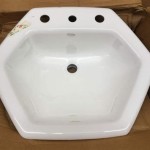Replacing a Bathroom Vent Fan with Light
Bathroom vent fans are essential for maintaining a healthy and comfortable environment. They remove moisture, odors, and pollutants, preventing mold growth and improving air quality. Over time, these fans can become noisy, inefficient, or simply outdated. If your existing bathroom vent fan is no longer performing optimally, replacing it with a new model, particularly one with a built-in light, can be a worthwhile investment.
Replacing a bathroom vent fan with a light is a relatively straightforward DIY project that can be accomplished with basic tools and a little patience. However, it's essential to understand the process and safety precautions before starting. This article will guide you through the steps involved in replacing your old vent fan with a new one equipped with a light, providing you with the knowledge and confidence to tackle this home improvement project.
Benefits of Replacing a Bathroom Vent Fan with a Light
Replacing your old bathroom vent fan with a new one that incorporates a light offers several advantages:
- Enhanced Ventilation: Newer models often boast higher CFM (cubic feet per minute) ratings, ensuring more efficient removal of moisture and pollutants.
- Improved Lighting: A built-in light provides brighter and more consistent illumination in your bathroom, making it easier to perform grooming tasks or apply makeup.
- Energy Efficiency: Modern vent fans with LED lights consume less energy, reducing your electricity bills and environmental impact.
- Noise Reduction: Many newer fans are designed with quieter motors, minimizing noise disturbance while operating.
- Aesthetic Appeal: Replacing an outdated vent fan with a contemporary model can enhance the overall look and feel of your bathroom.
- Safety: Some newer models feature features like automatic humidity sensors, automatically activating the fan when needed, preventing mold and mildew growth.
Steps for Replacing a Bathroom Vent Fan with a Light
Before embarking on the replacement process, gather the necessary tools, including a screwdriver, wire strippers, a voltage tester, a level, and appropriate safety gear like gloves and eye protection.
- Turn Off Power: Locate the circuit breaker controlling your bathroom's electrical outlet and switch it to the "off" position. To confirm power is off, use a voltage tester to ensure no electricity flows through the wires.
- Remove the Old Vent Fan: Unscrew the vent cover and remove it from the fan unit. Use a screwdriver to remove the screws holding the fan unit to the ceiling. If the old fan has a wiring connection box, disconnect the wires. Carefully detach the fan unit from the ceiling and set it aside.
- Prepare for the New Fan: Examine the new fan unit and its mounting bracket. Determine the best position for the new fan and use a level to ensure it is mounted correctly. You may need to drill new holes in the ceiling, if necessary.
- Install the Mounting Bracket: Attach the new fan's mounting bracket to the ceiling using screws. Ensure the bracket is securely fastened.
- Connect Wires: Depending on the model, you may need to splice wires from the old fan unit to the new one. Use wire strippers to expose the wires. Connect the black wire (hot) to the black wire of the new fan, the white wire (neutral) to the white wire, and the green wire (ground) to the green wire. Ensure all connections are tight and secure.
- Mount the New Fan Unit: Securely mount the new fan unit to the mounting bracket using the provided screws. Ensure the fan is level and stable.
- Install the Cover: Attach the new fan cover to the fan unit and ensure it is properly secured.
- Test the Fan and Light: Turn on the power at the circuit breaker. Switch on the light and the fan to confirm that they are functioning correctly.
Important Considerations
When replacing a bathroom vent fan with a light, consider these essential points:
- Ventilation Requirements: Determine the appropriate CFM rating for your bathroom. Refer to building codes and manufacturers' guidelines for recommended CFM values.
- Light Output: Choose a light that provides adequate illumination for your bathroom. LED lights offer energy efficiency and long lifespan.
- Noise Level: Select a fan with a low decibel rating for quieter operation.
- Safety Features: Consider models with features like automatic humidity sensors, overload protection, and UL certification for added safety.
- Installation Expertise: If you are not comfortable with electrical wiring, it's advisable to seek professional assistance from a qualified electrician.
Replacing a bathroom vent fan with a light can significantly enhance the functionality and aesthetics of your bathroom. By following these steps and considering essential factors, you can successfully complete this project and enjoy the benefits of a new, efficient, and well-lit space.

Install A New Bathroom Vent Fan Light The San Fernando Valley Sun

How To Install A Bathroom Fan Step By Guide Bob Vila


Hampton Bay 160 Cfm Ceiling Mount Room Side Installation Bathroom Exhaust Fan With Led Lighting And Night Light Lds Bf3001 The Home Depot

How To Install A Bathroom Fan With Bluetooth Speakers Fixthisbuildthat

How To Replace The Ceiling Exhaust Fan And Light In Bathroom

Installing An Exhaust Fan During A Bathroom Remodel Greenbuildingadvisor

Bathroom Exhaust Fan Guide

Bathroom Exhaust Fan Ultra Quiet 1 0 Sones Ceiling Vent With 3 Adjustable Colors Lights 110 Cfm Bath Ventilation Light Combo Fits For Home Office Hotel 105 Sq Ft Com

Bathroom Exhaust Fan Ultra Quiet 1 0 Sones Ceiling Vent With 3 Adjustable Colors Lights 110 Cfm Bath Ventilation Light Combo Fits For Home Office Hotel 105 Sq Ft Com
Related Posts







